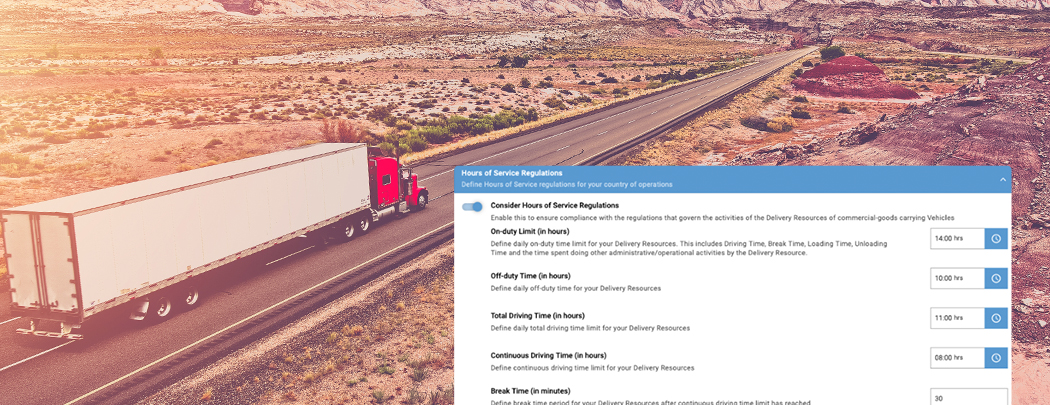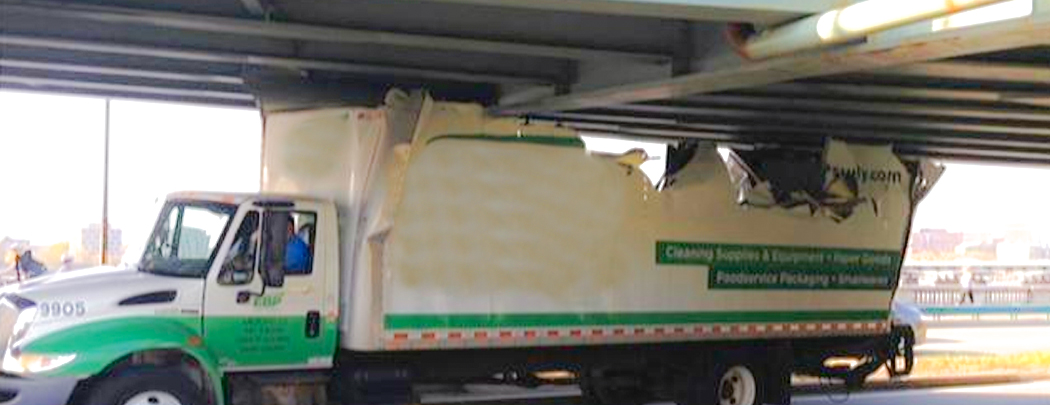This years ‘Safe Driver Week’, ensure your drivers are safer with these 5 important tips
It’s a wrap-up for the Safe Driver Week 2019 and we hope your fleet has come out of it with lesser citations than the last year. The theme of this years #SafeDriverWeek was overspeeding. Though overspeeding is a major cause of fatal accidents, we think there are multiple other factors that directly or indirectly contribute to driver safety on road.
To make your life easier, we have collated the top 5 measures that you should take to ensure that your drivers are safer on the road and your deliveries are always on-time. Keep reading below –
Tip 1: A crack-down on over-speeding

Every third operations manager has been woken up in the middle of the night at least once in their career because their CMV has met with a road accident. 25% of these accidents are caused due to overspeeding. Not only does overspeeding cost fatalities and injuries, but it also attracts hefty fines to the company.
The fine and penalty data is publically available for shippers to see before they contract with carriers for their deliveries. Safety is also a culture thing. Drivers prefer to drive for companies who are more particular about safety and have a clean track record.
Operations Manager should be on the top of over-speeding cases and should be able to warn the drivers at the right time. The carrier tracking system should have customized alerts to notify the Ops Manager in case of a speed breach.
On interacting with various over-speeding accidents victim drivers, 40% of them said that they over-sped to ensure that they could deliver their shipments on time. Many companies penalize drivers for not delivering the orders on time by deducting incentives for delayed orders.
Age-old transport management systems lack the capability to efficiently track driver behavior and report the same in real-time. This is where the new-age technologies come handy. You should immediately start working on transforming your tech landscape and replace older systems with newer SaaS-based logistics management technologies that have advanced functionalities to track your driver’s behavior en-route and report everything in real-time for you to take the right measure.
Recommended Read: ELD Mandate For Trucking Industry By FMCSA – What Should You Know?
Check out how LogiNext uses 16 qualitative and quantitative parameters such as traffic, weather conditions, vehicle constraints, mile constraints, shift timings, and more to devise the best delivery route. Once dispatched, the LogiNext system tracks every small behavioral trait of the drivers through ELDs, mobile Apps and multiple GPS enabled sensors ensuring that the drivers are safer on-road and meet their delivery SLAs.
Despite following the best route, if the driver faces any unexpected delays, LogiNext’s platform also alerts the customers about the ETA delay and the driver can have a relaxed drive and avoid accidents.
Tip 2: Steer the phone away while driving

After over-speeding, the second most common reason for accidents is using mobile devices while driving. Over 13% of the CMV accidents happen when drivers are using their devices to check maps or messages from the HQ. This is a catch-22 situation because in most cases the driver needs to look at his phone for deliveries and parking the vehicle aside to access his device is not always a feasible option.
Thanks to voice assistants, drivers can now go totally handsfree and be able to navigate and check messages without picking their devices. With the right AI-based SaaS technologies today, like LogiNext, you can leverage this capability to ensure that drivers do not have to switch between the steering wheel and phone while driving.
To cater to such issues, LogiNext has a comprehensive list of integrations through which, it can deliver notifications to WhatsApp and SMS which the driver can easily ask the voice assistant to read. Drivers can also set up custom sound alerts for order received or order canceled.
Through LogiNext solution’s omnichannel communication capabilities, drivers can have 2-way communication with their operations manager without getting off the wheel. If you are a safety-centric company and you would like to relieve your drivers from back and forth between the wheel and the phone then you should definitely have such a technology in place.
Tip 3: Regulate Hours of Service of your drivers

While we anticipate the new HOS regulation, do you have the tech in place to ensure that the route prescribed to drivers is DOT compliant?
CMV drivers are supposed to follow the hours off-duty and on-duty and are supposed to maintain RODS (record of duty status) as proof when asked for citations. Every year 3PL companies pay fines between $11,000 to $16,000 in DOT non-compliance. Despite having ELDs in place, tracking this compliance by solely depending on driver judgment could prove risky.
LogiNext being the world’s only DOT compliant route planning platform, helps companies mitigate the risk of penalties and a bad reputation.
With LogiNext, You can specify the on-duty time, off-duty time, total driving time, continuous driving time and the break-time. The system will plan routes around this compliance. Fleets can be tracked and alerts can be sent to a non-complying fleet driver.
If you’re looking to save costs on fines and penalties and looking at better customer satisfaction scores, you should definitely sign-up for a demo.
Tip 4: Keep a real-time check on ELD data and regulatory documentation

If your company is a few hundred fleet strong then tracking whether the vehicle insurance and daily logs are up to date for each vehicle is a challenging task.
Since ELD’s have been introduced in 2017, it is mandatory for each driver to keep a track of his off-duty time, on-duty time driving and on-duty time non-driving. Also, it is always mandatory for vehicles to carry proof of the last 14 days ELDs.
Recommended Read: How To Pass A Roadside ELD Inspection Without Violations
While the theme of this year’s Safe Driver Week 2019 is over speeding, it is quintessential for trucking companies to ensure that their fleet documents are complete and up-to-date.
Make sure your logistics tech keeps a real-time check on the ELD logs and maps it to drivers hours of service while planning routes. LogiNext is the only system in the world to have this functionality. It checks your fleet against regulatory mandates like vehicle insurance, fitness, and drivers ELD compliance, like, on-duty hours logged before assigning the routes. If something’s not right, the operations manager gets an alert highlighting the issue.
Make sure your fleet is DOT compliant and never pay fines due to missed insurance renewal dates.
Tip 5: Know your road restrictions and load restrictions

How many times has a delivery truck been delayed because it has taken a road that is too short for it to pass? How many instances do you know of when the truck takes a low weight capacity bridge and then you’ve had to pay hefty fines for it to go scot-free? And how do you reckon that truck drivers decide route factoring on the city entry timing restrictions? Perhaps, they don’t.
“Optimizing these factors manually to perfection is next to impossible”
That being said, LogiNext’s AI-driven route planning technology brings forth a much better solution. Yes, you read it right! With LogiNext, you can automate the route planning process considering all the constraints like road restrictions, load restrictions, city limits and so much more. Not just that, you can save up to 17% on haul and middle mile deliveries.
If you are interested in knowing more about how you can implement all the 5 tips with just 1 simple solution, think no more and sign-up for a LogiNext Mile demo using the link below-
Sign-up for a Demo
146 1








Pingback: This years ‘Safe Driver Week’, ensure your drivers are safer with these 5 important tips - 24/7 Customs Broker News